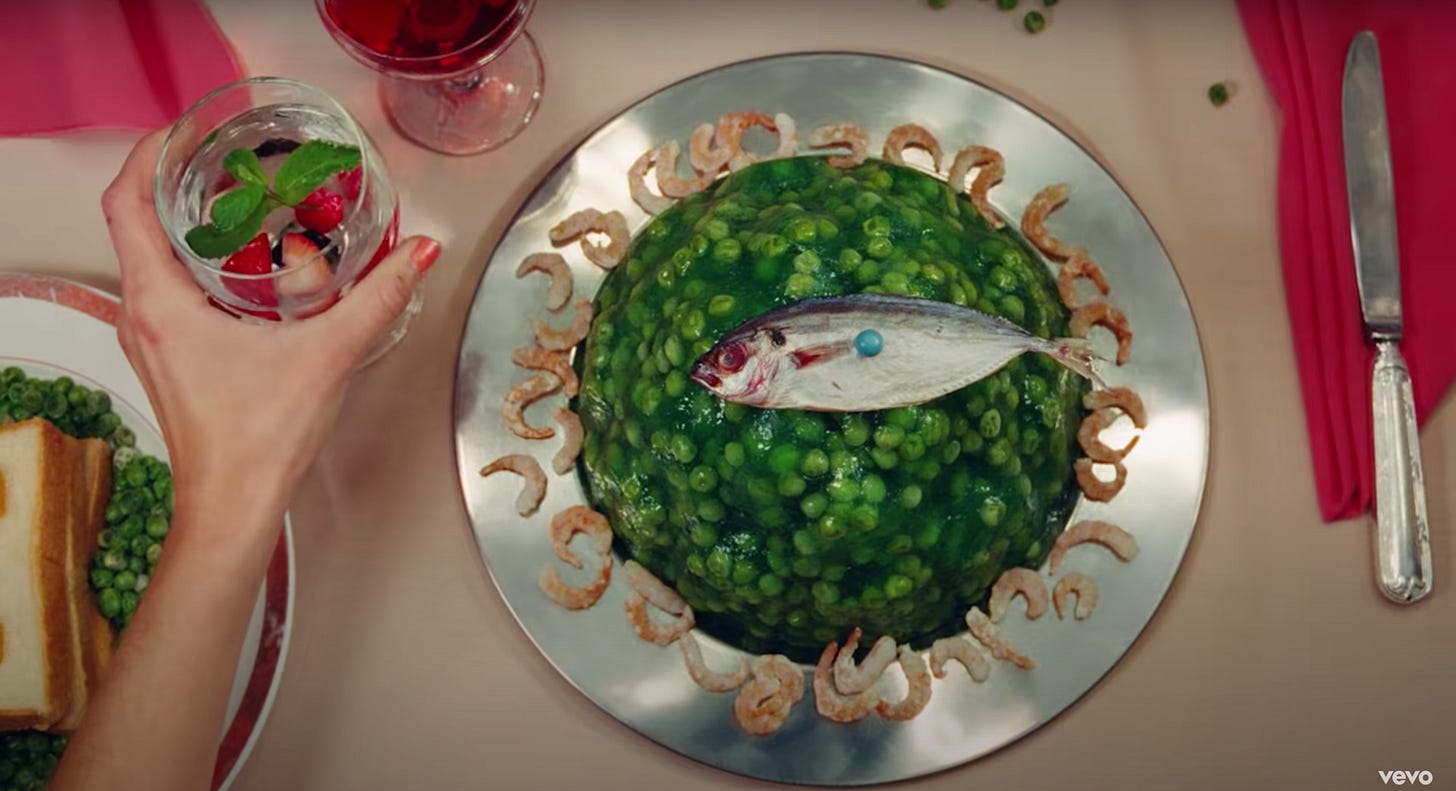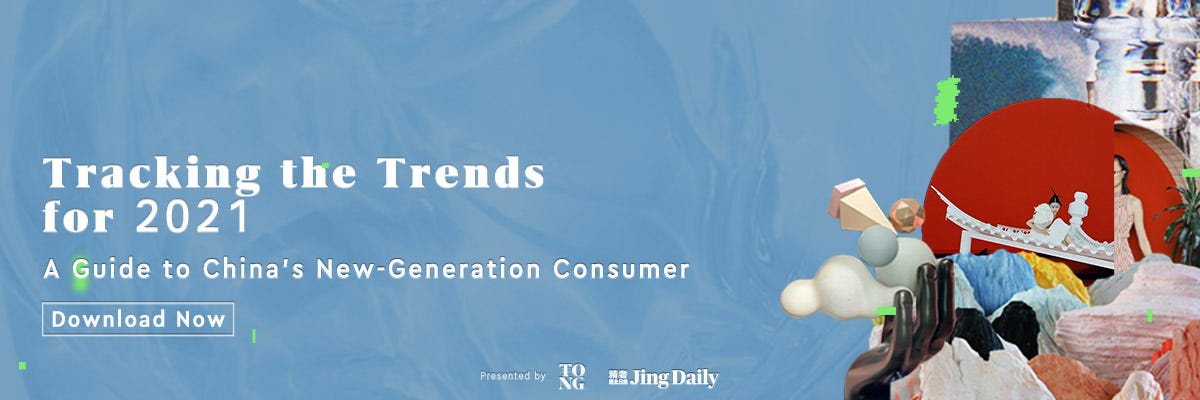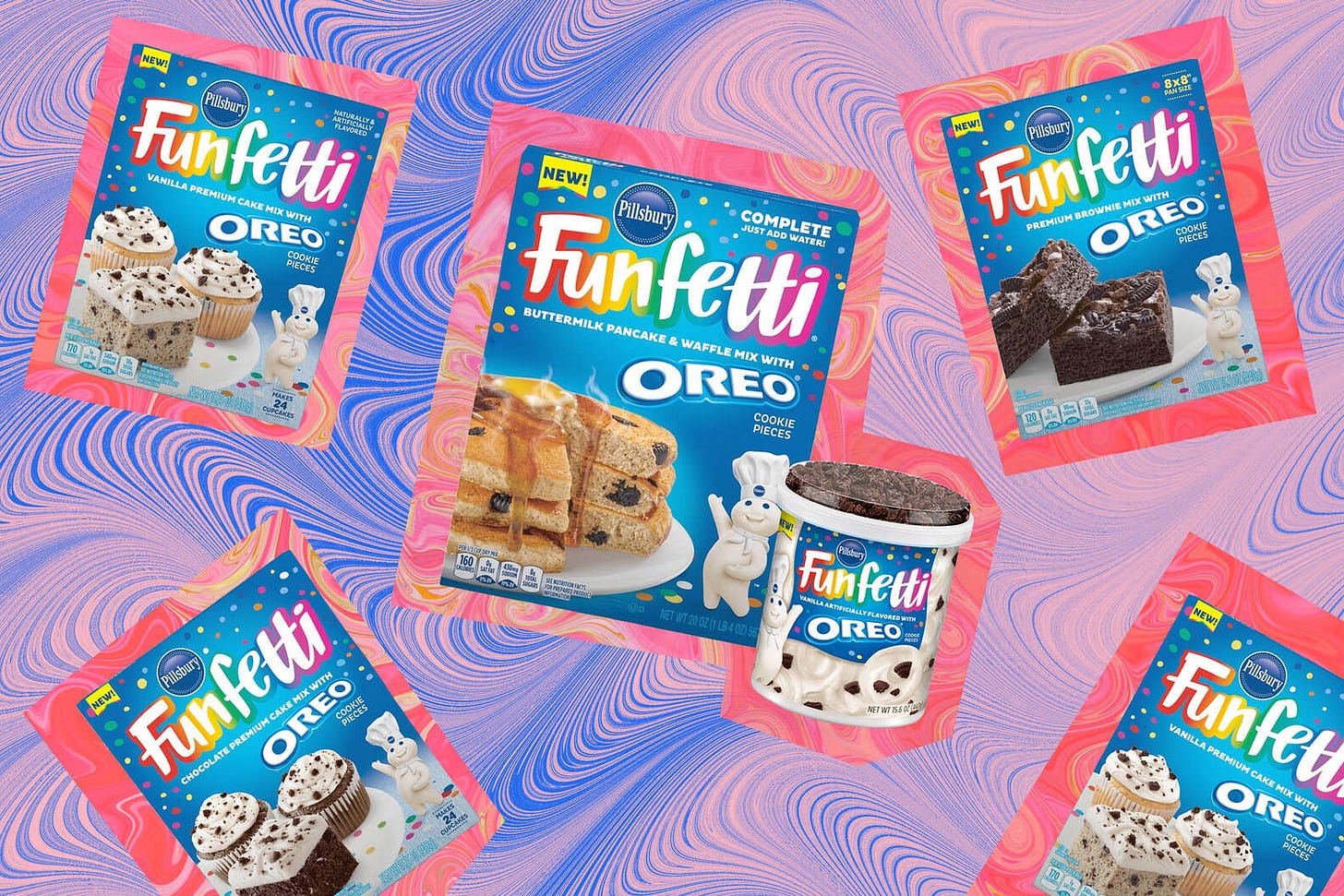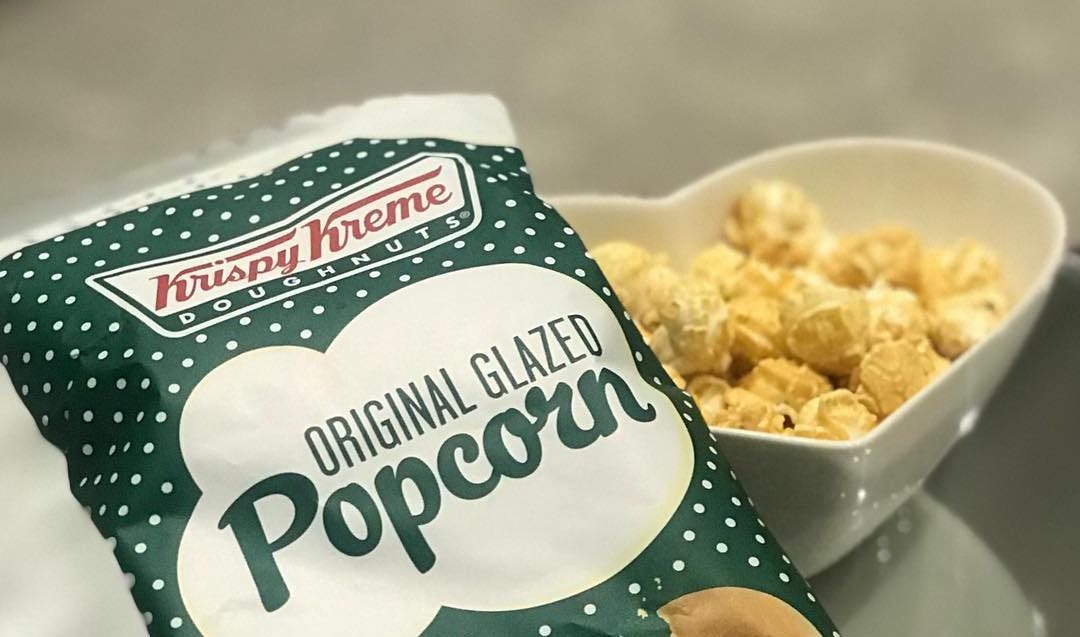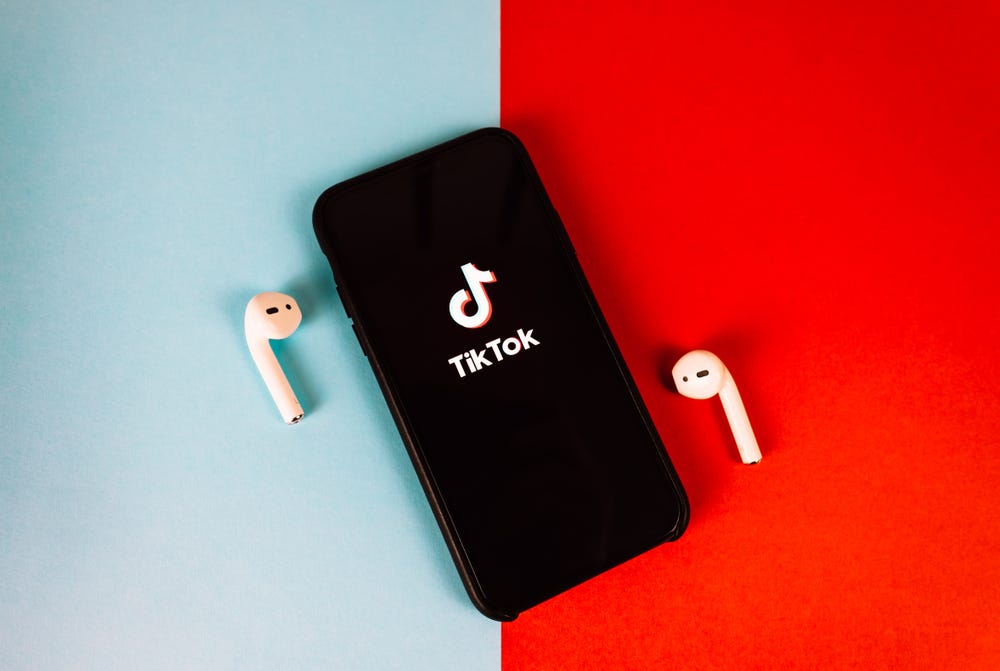Why Brands Want a Slice of Social Media’s Cake Craze
Plus: Why food brand collaborations sell more, TikTok's TV takeover, and will "revenge spending" come to the U.S.?
Published three times per week, the Content Commerce Insider newsletter highlights how brands create content to drive revenue, globally. If you have received our newsletter from a friend or colleague, we hope you will subscribe as well and follow us on LinkedIn and Instagram.
Over the past year, you’ve probably liked images of a friend’s homemade #quarantinebaked treats or found yourself mesmerized by a video detailing the production of an elaborate Marie Antoinette-style cake. Food is a form of universally relatable content that appears to seep through the algorithm of just about every platform.
Last year, Aston University researchers found that our food choices are directly impacted by what we see on social media, and, since the highly visual nature of the internet emphasizes what looks good over what remains unseen (such as nutrients), we’ve witnessed a rising fascination with edible goods that are interesting to look at.
Brands are taking note, with successful examples including Pokémon’s collaboration with Baskin Robbins to release treats inspired by the franchise’s famed characters, Korean eyewear brand Gentle Monster’s launch of Nudake, an artistic dessert shop, and eBay Australia’s celebration of its twenty-first birthday by offering Gelato Messina’s hyped Dr Evil Magic Mushroom cake for sale.
Los Angeles-based baker Lexie Park is one Instagrammer reaping the rewards of social media’s good looking-food craze. In 2019, she founded Nünchi, a custom purveyor of cartoonish jelly cakes in glowing pastel hues. Demand for her creations has soared, bringing her to the attention of brands such as Nike, ASOS, Vans, Skims, and even “The Drew Barrymore Show.” Park told CCI that her calendar is fully booked with brand collaborations for the next three months.
With its focus on sports and fitness, a brand like Nike might seem like the opposite of a cake maker, but Park’s creation for the brand, made for a 2020 event in Los Angeles, was a creative piece that tapped into the internet’s obsession with dishes that look more like sculptures than food. Similarly, the Nünchi x Skims collaboration complemented the aesthetic of the Kim Kardashian brand’s new jelly sheer collection. “It’s one thing to have a logo on the cake, but with Skims, I really wanted to make it fit their color palette and just their overall vibe,” said Park.
Park explained how natural it has felt to create cakes for non-food brands. “A lot of my inspiration comes from outside baking, from fashion or art. I think that’s the case for a lot of people in this generation,” she said. “We’re living in a hodgepodge of everything. Coming initially from fashion, I thought that [the hospitality industry] was going to be a lot different but it’s not at all. We’re all just trying to find some authenticity and voice, and sometimes that means looking to other industries.”
Integrations between food, fashion, gaming, and other fields are becoming more seamless thanks to the way that social media offers a sort of melting pot for trends to mix, serving as a reliable source of inspiration for content marketing.
Food trends also reflect broader online movements online, as seen with the fascination with “dark cuisine” (heian liaoli) that originated in China as a rebellion against immaculately presented dishes. Its followers are obsessed with messy, bizarre dishes in a manner that’s reminiscent of how progressive influencers share their flaws with their followers to help tear down boundaries and appear more relatable.
The year 2020 also saw the viral sensation of cakes that look like something else entirely, spurred by the BuzzFeed Tasty video “These Are All Cakes,” which revealed everyday items — from Crocs to a roll of toilet paper — to be elaborately constructed and frosted desserts.
These images present cakes as universally intriguing symbols, rather than as the objects of gastronomical cravings. Their significance lies beyond taste or nutritional value, as both are irrelevant to the screen-deep reel of online media, and brands can use them to create social capital and identify themselves with the zeitgeist.
Working at the intersection of popular culture and food, Hollywood stylist Emily Marshall-Garrett works predominantly with food and television and was responsible for styling Justin Bieber’s extravagant platter in his recent “Yummy” music video. “It is definitely true that I get more calls for wild and crazy food lately, and I see more and more media where it’s included,” she told CCI. “This is true across all visual media.”
Marshall-Garrett explained how food has moved beyond its original purpose in popular culture, “It tells you a lot about the idea you are trying to communicate — food is a very efficient communication tool. Especially as it pertains to class, gender, culture, geography, and epoch.”
The current pandemic era has been defined by a greater interest in baking, with YouGov reporting that 53% of U.K adults engaged in the activity during the country’s first lockdown in 2020. And that situation has likely also spurred the growing interest in cakes as content.
The confluence of increased social media usage, #quarantinebaking, and the transformation of food from a consumable good to an Instagrammable one all adds up to aesthetic cakes having their moment. So much so that Nünchi’s Park plans to develop her brand far beyond jelly cakes. “The next step is a brick-and-mortar shop, I’m also launching clothing and gym wear. I’ll have jelly on clothes and stuff,” she said. “I’m really excited to expand and go back to my home of Korea too.” In 2021, bakers will be the creative polymaths to watch.
- by Sadie Bargeron
Mentioned in today’s newsletter: Asos, Baskin Robbins, Campbell’s, Coffee Mate, Conagra, Gentle Monster, Kraft Heinz, Krispy Kreme, Mondelez, Nike, Nünchi, Oreo, Pillsbury, Pokémon, Skims, Smartfood, Starburst, Vans, Yoplait.
CollaBrands: How Sweet It Is: Co-Branding Creates Comfort With Food
The coronavirus pandemic has been a boon for brand collabs involving food and beverage. With so many normal activities curtailed, consumers have been spending significantly more time at home, where its easy to find comfort in food. Brand collaborations were a growing trend in the grocery aisles even before the pandemic, but the past year has seen a marked increase in activity, with more and more food brands partnering with one another to offer new products.
One of the side effects of the current situation is that consumers have relaxed their healthier pre-pandemic eating habits and are looking for comfort products, often tapping into a sense of nostalgia for what they knew and loved as kids. Many of the brands that are involved in the uptick in food collaborations come from companies whose sales were on the decline before the coronavirus upended life as we knew it. Conglomerates such as Mondelez, Kraft Heinz, Campbell’s, and Conagra have all seen significant increases in their sales of core food products and most are using brand collaborations to entice consumers with novelty and the excitement of seeing two beloved brands partnering to create a doubly delicious dose of comfort. As an in-store promotional tool, these collaborations are also driving greater sales. Comfort foods offer consumers something soothing, familiar, and nostalgic at a time when they most need it.
Why Food Brand Collaborations Sell More
During these uncertain times, consumers seek a sense of security. Bringing together two comfort food brands remembered from childhood can awaken nostalgia while also adding an element of the new, creating a compelling incentive for consumers to make purchases. A few examples include Pillsbury Funfetti pancake mix with Oreo pieces, Coffee Mate flavored with Fruity Pebbles and Cocoa Pebbles, Smartfood popcorn that tastes like a Krispy Kreme glazed donut, and Starburst candy-flavored Yoplait yogurt.
The Flintstones: Historic Content for Commerce
This year marks the fiftieth anniversary of a classic collaboration between branded content and a consumer product. In 1971, Flintstones creator Hanna-Barbera partnered with Post to launch Fruity Pebbles cereal. What makes this interesting for those of us in the content-commerce business is that it marked a historic turning point for collaborations between content and brands. Prior to 1971, there had never been a brand created around a media character.
Three generations of Americans have grown up with “The Flintstones,” which, incidentally, was the first made-for-TV cartoon at the time of its premiere on ABC in 1960, in the still-nascent days of television. Originally scheduled for the 8:30 p.m. primetime slot on Friday nights, “The Flintstones” was meant to be a kind of Stone Age version of “The Honeymooners,” and it was especially popular among teenagers. By the mid-1960s, TV networks saw a major growth opportunity in Saturday morning cartoons for kids. Thus, the Flintstones made its move to Saturday morning, a brand new audience of children, and the pioneering content-commerce partnership that gave rise to Fruity Pebbles and Cocoa Pebbles began.
What Happened to Healthy Eating?
Common sense would tell us that during a deadly pandemic, with a rapidly spreading virus that can be fatal to the elderly and those with compromised immune systems, we should be eating foods that boost our immune systems. And yet many Americans are eating less healthily while snacking a lot more. According to findings published in the journal Obesity, the Covid-19 pandemic has produced significant health effects well beyond those of the virus itself.
The fear of getting ill has had a significant impact on the daily routines and social interactions for many, and there have been measurable declines in mental health among the U.S. population, with the obese being disproportionately affected.
According to a report in the New York Times, the study’s researchers “found that most people became more sedentary, which they said was probably related to less daily commuting and more time spent indoors. But even when people did engage in structured exercise, it tended to be at lower intensity levels compared to before the pandemic. Many people also said they had given in to their food cravings: Consumption of sugar-sweetened beverages and other sugary snack foods, for example, went up.”
As a long-time observer of brand collaborations, I applaud the creativity of the packaged food industry, as well as the positive feelings that fun food collabs can give us, yet the sensible part of me wonders whether, given the current health concerns surrounding Covid-19, Oreo pancakes, Fruity Pebbles coffee creamer, and Krispy Kreme Popcorn may lose their luster when we consider the longer-term effects of these indulgences.
Steven Ekstract is Managing Director of Global Licensing Advisors, a consultancy that provides companies with insight and strategic direction to succeed in the $300 billion a year licensing business. Ekstract is the founder and former Publisher of License Global magazine, the leading information source for the consumer licensing business. He can be reached at Steven@globallicensingadvisors.com.
TikTok Take
TikTok partners with WPP: The Bytedance-owned platform has announced a first-of-its-kind global partnership with advertising company WPP that will give its agencies and clients early access to TikTok advertising products in development.
New update prompts viewers to reconsider content: TikTok’s latest update aims to help viewers assess the veracity of content that has been deemed “inconclusive” by fact-checkers. A banner will be shown on videos that have not been verified and the creator will also be notified that their video was flagged as unconfirmed.
Users under the age of 13 will be blocked in Italy: In agreement with Italian authorities, TikTok will now suspend all users who reported their ages as under 13, following the death of a 10-year-old girl who died after attempting a “blackout challenge.”
TikTok attains Gold Standard 2.0 certification from IAB UK: AdWeek reports that TikTok has been awarded by the industry body for digital advertising IAM UK for providing the best advertising environment for brand partners, from data protection to educational programs.
Group Nine Media provides in-app science videos: As a part of the Creative Learning Fund, a $50 million TikTok initiative, the platform is paying Group Nine Media's science brand Seeker for original videos, DigiDay reports.
Nathan Apodaca partners with Ocean Spray for Super Bowl campaign: The viral skateboarding TikToker, aka DoggFace, is a natural fit for the beverage brand’s first collaboration with an influencer. Read more on AdAge.
Next stop, taking over TV: As of February 4, TikTok has made its app available on all smart TVs in France, Germany, and the United Kingdom. In December, the company announced the rollout of a TikTok app for Samsung televisions.
Global News
Mcdonald’s is marking the Lunar New Year in the U.S. market with entertainment-focused initiatives that include a livestreamed concert on its app with hip-hop artist Masiwei, an IGTV miniseries, and the distribution of virtual red envelopes to consumers. Marketing Dive
But Chinese-style post-pandemic “revenge spending” may not make its way to the United States, according to analysts, who foresee a more muted increase in consumption once life returns to more-or-less normal. Glossy
Consumer brands are shifting more attention to older shoppers with a strong interest in aging well. Wall Street Journal
Music sharing platform Soundcloud is launching an online Fortnite tournament on February 18 that will bring together live music and game streaming in a single event. Input
Restaurant merch is emerging as a major fashion statement, one that allows consumers to show their support for their favorites in an industry hard-hit by the pandemic. The Guardian
K-pop supergroup Blackpink’s first virtual concert on YouTube drew an audience of 280,000 fans from around the world, and marked a successful start to members-only access to live entertainment via YouTube Music. Paper
Rihanna’s Fenty Beauty was ranked as the most valuable celebrity beauty brand for 2020, according to data from Tribe Dynamics, with an estimated value of $555 million. WWD
Online fashion retailer Asos beat out the likes of China’s fast-rising Shein to acquire Arcadia Group’s brands, including Topshop and Miss Selfridges. Refinery29
With more than half of the Gen Z audience likely to skip the live broadcast of the Super Bowl, more brands are focusing on the demographic’s interest in content surrounding the game. PR Week
Another take sees the Super Bowl as “essentially all of the marketing dilemmas of the past 10 months boiled down to one football game.” Fast Company






